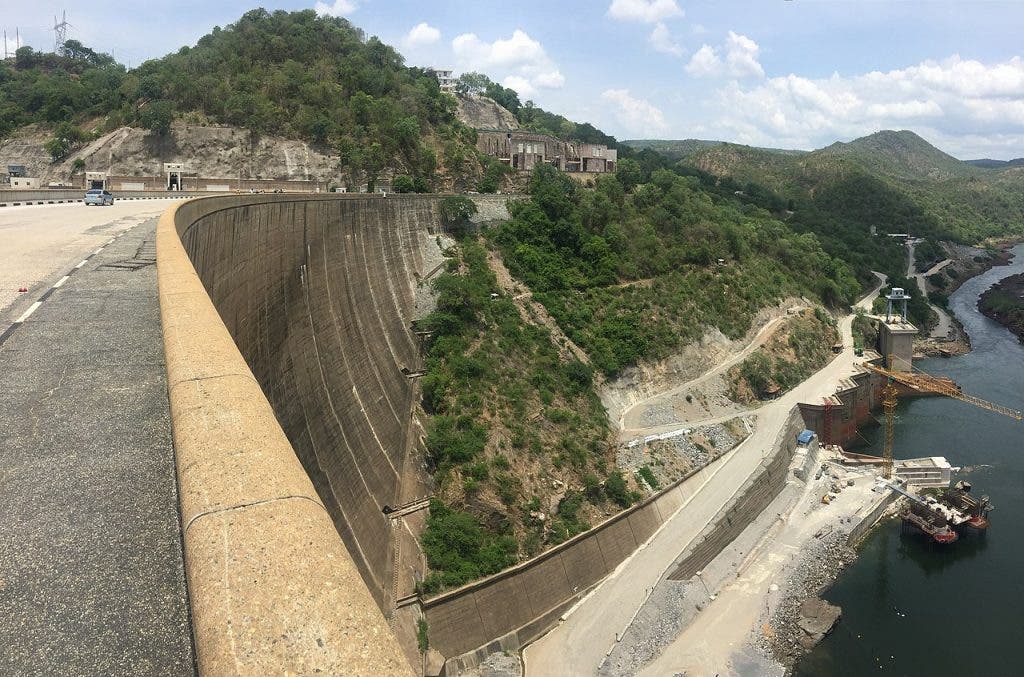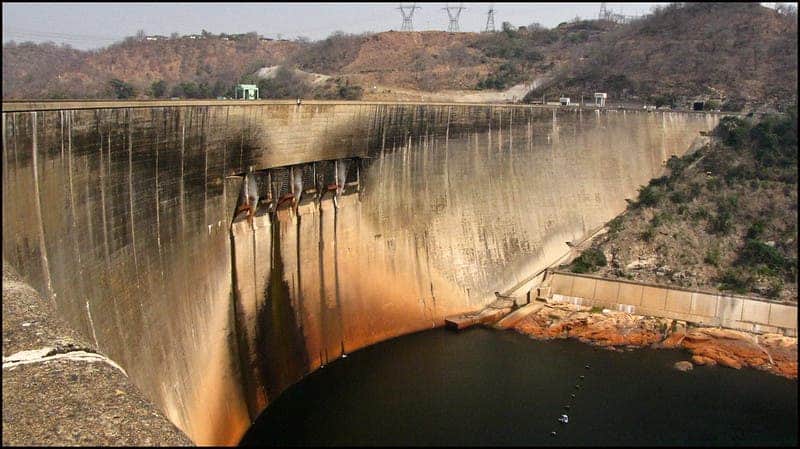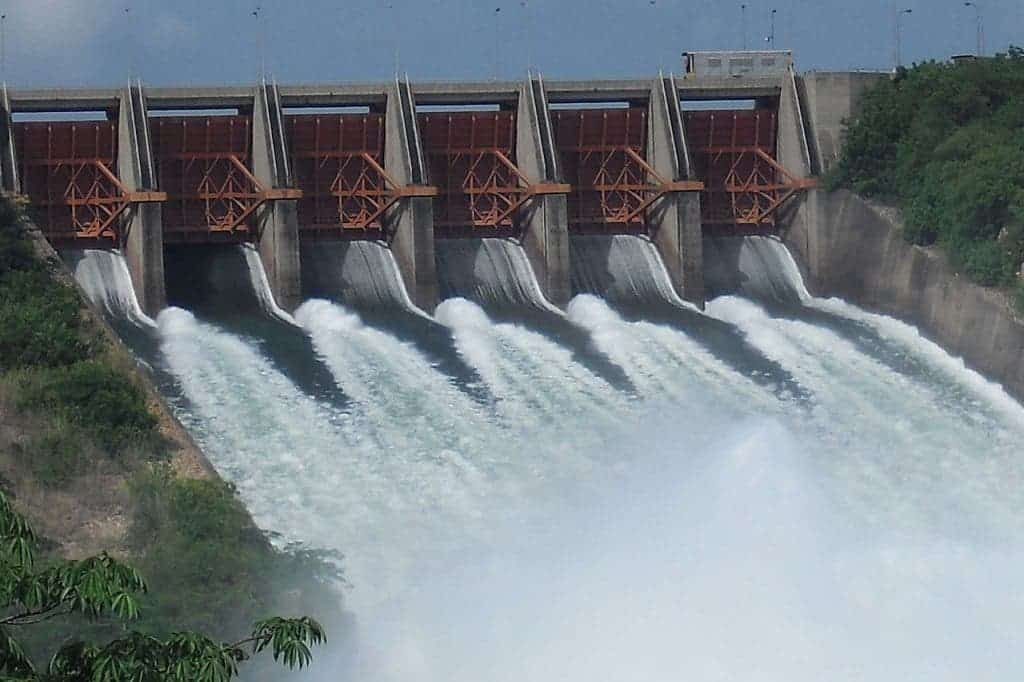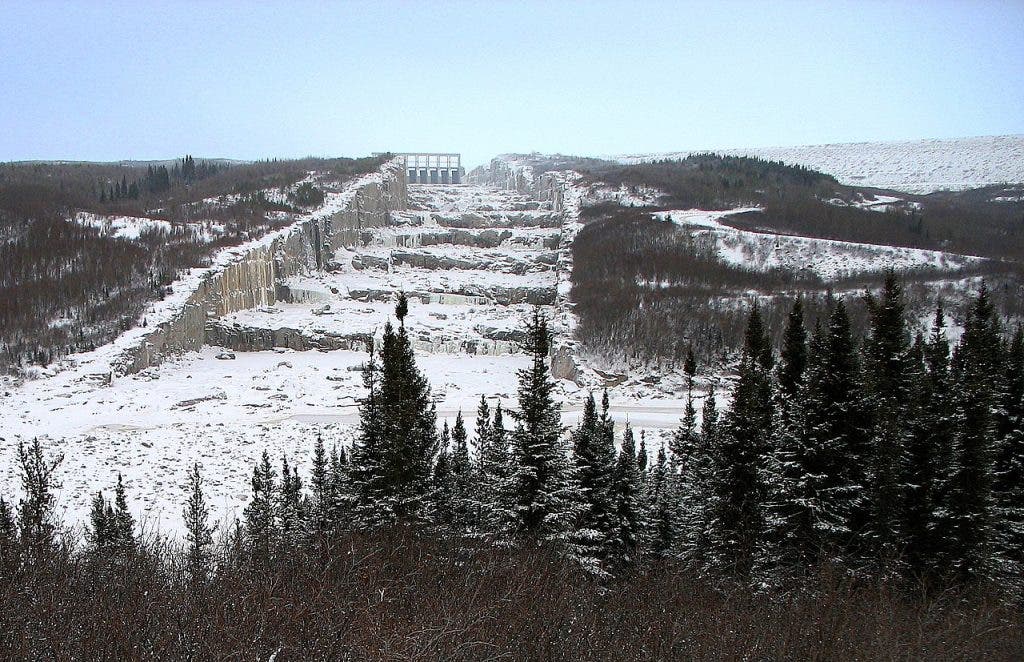Dams are some of the most imposing structures mankind has ever built, putting a big mark wherever they are located. Dams are, usually big; very big. But which are the biggest? Well, it depends on how you look at it — here, we’ll look at water capacity, but there are other comparisons (like total height or produced energy).

First — Some Dams ABC
Hydroelectric energy is the most commonly-used renewable source of electricity. It’s also considered the lowest-cost source of electricity in many markets at about US$0.047 per kilowatt hour. China is the main producer of hydropower, followed by other top producers such as the United States, Brazil, Canada, India and Russia.
Most dams have a reservoir of water, a gate or valve to control how much water flows out of the reservoir, and an outlet or place where the water ends up after flowing downward. Water gains potential energy before it spills over the top of a dam or flows downhill. This is then converted into kinetic energy that can be used to generate electricity.
There are several types of hydroelectric energy plants. The most common one is called an “impoundment facility”, in which a dam is used to control the flow of water stored in a reservoir. When more energy is needed, water is released from the dam. Once water is released, it flows downward through a turbine, and the blades power a generator.
Another type is a “diversion facility”, which doesn’t use a dam. Instead, it uses a series of canals to channel flowing river water toward the generator-powering turbines. Finally, the third type is called a “pumped-storage facility”, which stores energy by pumping water uphill from a pool at a lower elevation to a reservoir at a higher elevation.

So, let’s see what the biggest dams are.
The largest dam by water storage capacity: Kariba Dam (Zimbabwe)
Located at the former Kariba Gorge, the dam creates Lake Kariba – with a storage capacity of 185 billion cubic meters of water and a surface area of 5,580 square kilometers. This massive dam is located on the border between Zambia and Zimbabwe.

Construction of the dam began on 1956 and was completed in 1959. The dam supplies some 6,700 billion kilowatt-hours of electricity annually, generated by Kariba North Bank and South Bank companies. It came at a huge cost, requiring the resettlement of more than 30,000 Batonka tribespeople of Zambia and the evacuation of thousands of wild animals.
Some Africans initially opposed construction of the dam, seeing it as a symbol of the unpopular Federation of Rhodesia and Nyasaland, which dissolved into Rhodesia (now Zimbabwe) and Zambia in 1963. Later, however, the dam was accepted because of the inexpensive electric power it furnishes to Zambia’s prosperous copper industry.
Bratsk Dam (Russia)
Located in Siberia, it ranks as the second biggest dam in the world thanks to its 169.27 billion cubic meters reservoir. The dam is at the Angara River and the reservoir created by it covers a surface area of 5,540km2. It’s 125 meters high and 1,452 meters in length, with a rail line and a highway on its top and an installed capacity of 4,500 MW
Construction was done by 1965. It proved very difficult, as the Siberian winter temperatures can fall as low as -58ºC and there’s frost 281 days per year. Plus the city of Bratsk where it’s located is very remote from materials and labor supplies. Other three dams are also located along the Angara River (Irkutsk, Ust-Ilim, and Boguchany).
Akosombo Dam (Ghana)
Also known as the Volta Dam, it’s the third biggest dam based on water storage capacity. It was built on the Volta River and it created the 8,500km2 Lake Volta, which is the world’s biggest reservoir by surface area. The dam has a crest length of 700m and a height of 134m, and involved 12 million cubic meters of surface excavation.
It was built between 1961 and 1965 thanks to the financial support of the World Bank, the United States and the United Kingdom. While it now supplies energy to Ghana, Benin and Togo, its original purpose was to provide electricity for the aluminum industry. Its electric output was upgraded to 1.02 megawatts in a project in 2006.

Daniel Johnson Dam (Canada)
The dam, also known as Manic 5 Dam, is located at the Manicouagan River, creating the Manicouagan Reservoir with a storage capacity of 139.8 billion cubic metres. The reservoir is the fourth biggest in the world. The dam is 213,9 meters high and 1,310 meters long and was constructed using 2.2 million cubic meters of concrete.
The dam is managed by Hydro-Québec and was constructed from 1959 to 1968 with an installed capacity of 2,660 MW. It was named after Daniel Johnson, the 20th Premier of Quebec, who was responsible for starting the project while in office. He died on the day he was supposed to preside over the inauguration of the dam.
Guri Dam (Venezuela)
The fifth biggest dam by the size of the reservoir is officially known as the Simón Bolívar Hydroelectric Plant. Located in Venezuela, it has a reservoir of 135 billion cubic metres. The dam is 162 metres high and 7.5 kilometres long. For many years, it was the most powerful in the world with a capacity of 10,200 megawatts.
The construction was done in two phases, which started in 1963 and 1986. A modernization project for the dam is currently underway. It’s situated 100 kilometers upstream of the Caroni River in Necuima Canyon in the region of Orinoco. Venezuelan company CVG Electrification del Caroni (Edelca) operates and maintains the plant.
Aswan High Dam (Egypt)
This is the biggest dam on the Nile River in Egypt and the sixth biggest dam in the world based on water storage capacity. Its reservoir, Lake Nasser, named after former president Gamal Nasser, has a water storage capacity of 132 billion cubic meters. It generates 2,100 MW and also provides water for agriculture in Egypt and Sudan.
The dam follows the construction of the Aswan Low Dam, completed in 1902. Based on the success of the Low Dam, then at its maximum utilization, construction of the High Dam became a key objective for the government. The dam was seen as pivotal to Egypt’s industrialization, with its ability to control flooding and generate electricity.

W.A.C Bennett Dam (Canada)
Built on the Peace River in British Columbia, the dam ranks as the seventh largest with a storage capacity of approximately 74 billion cubic meters and covers a surface area of 1,773km2. At the dam, the Finlay, the Parsnip and the Peace Rivers feed into Williston Lake, also referred to as Williston Reservoir, created as part of the project.
The dam was named after the former premier of the province who promoted its construction as part of an economic development plan. Construction started in 1961 and finished in 1967 at a cost of $750 million. It has an installed capacity of 2,790MW and started generating electricity in 1968, operated by the company BC Hydro.
Krasnoyarsk Dam (Russia)
It’s the world’s eighth biggest dam, located on the Yenisey River in Siberia. It created the Krasnoyarskoye reservoir with a storage capacity of 73.3 billion cubic meters. It was the world’s single largest power plant until the Grand Coulee Dam in Washington state reached 6,181 MW in 1983 – exceeding the 6.000MW is currently generates.
The dam was constructed from 1956 to 1972, and since it has been mainly used to supply energy to the local aluminum plant Krasnoyarsk. Its construction was such an important development for the country that the government decided to depict the dam on the 10-ruble banknote – introduced in 1998 but discontinued in 2010.
Zeya Dam (Russia)
Constructed from 1964 to 1975, the dam was built on the Zeya River in the Amur Oblast of Russia, north of the Chinese border. It created the Zeya reservoir with a storage capacity of 68.42 billion cubic meters, which is the ninth biggest dam based on reservoir capacity. The reservoir covers a surface area of 2,419 squared kilometers.
The dam’s power plant comprises of six generating units with a combined installed capacity of 1,290MW. More than two billion cubic meters of concrete were used to build the dam, which stands 112 meters high and stretches for 714 meters. The Baikal-Amur Mainline railway runs along the north shore, where a bridge was constructed.
Robert-Bourassa Dam (Canada)
Formerly known as La Grande-2, the dam is located in the Canadian province of Québec and has a reservoir of 61.7 billion cubic meters of water that covers nearly three-square kilometers. The dam is owned by Hydro-Québec and was constructed from 1974 to 1981. It currently has an installed capacity of 5,616MW.
The dam was named after Robert Bourassa, the former provincial premier who oversaw the James Bay Project, the construction of a series of hydroelectric plants that created one of the largest of its kind in the world by extension territory. It’s located right next to the plant La Grande-2-A, which was commissioned in 1991-1992.

Hydropower is important — but not free of problems
The world’s existing hydropower capacity will need to grow by around 60% by 2050 to reach 2,150 GW to help limit the rise in temperature to well below 2ºC, in line with the Paris Agreement on climate change, according to the International Renewable Energy Agency (IRENA). This would generate around 600,000 jobs over the next decade.
While sometimes questioned due to displacing communities and affecting the surrounding environment, hydropower also has a number of advantages. They are a clean energy source and won’t pollute the air like power plants that burn fossil fuels. The energy generated relies on the water cycle, making it a reliable and affordable power source.


